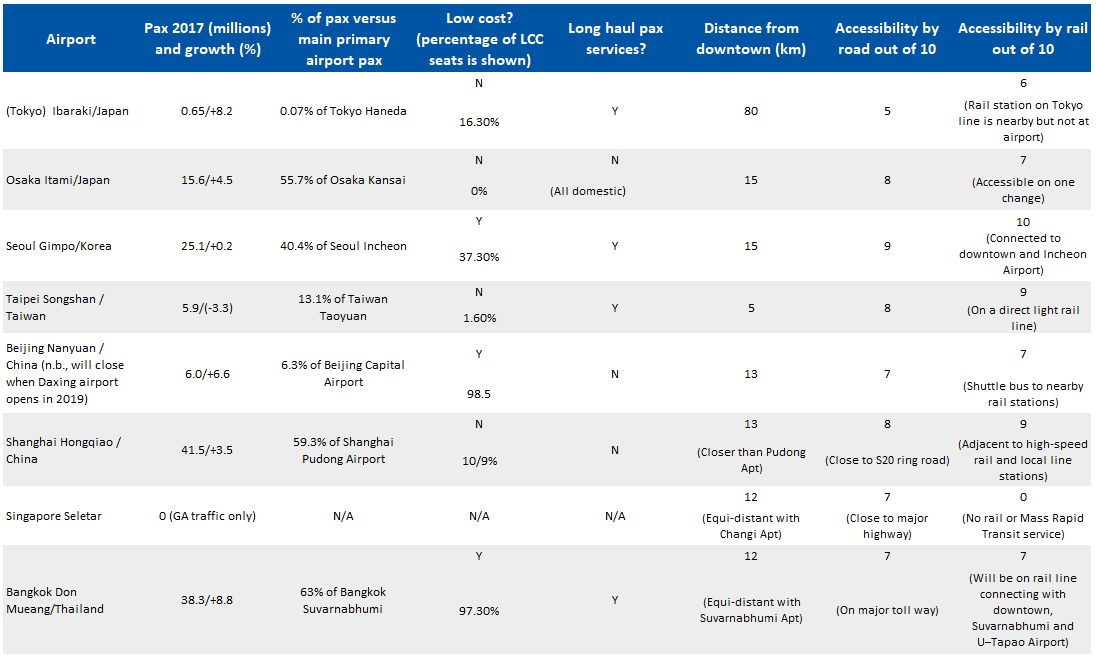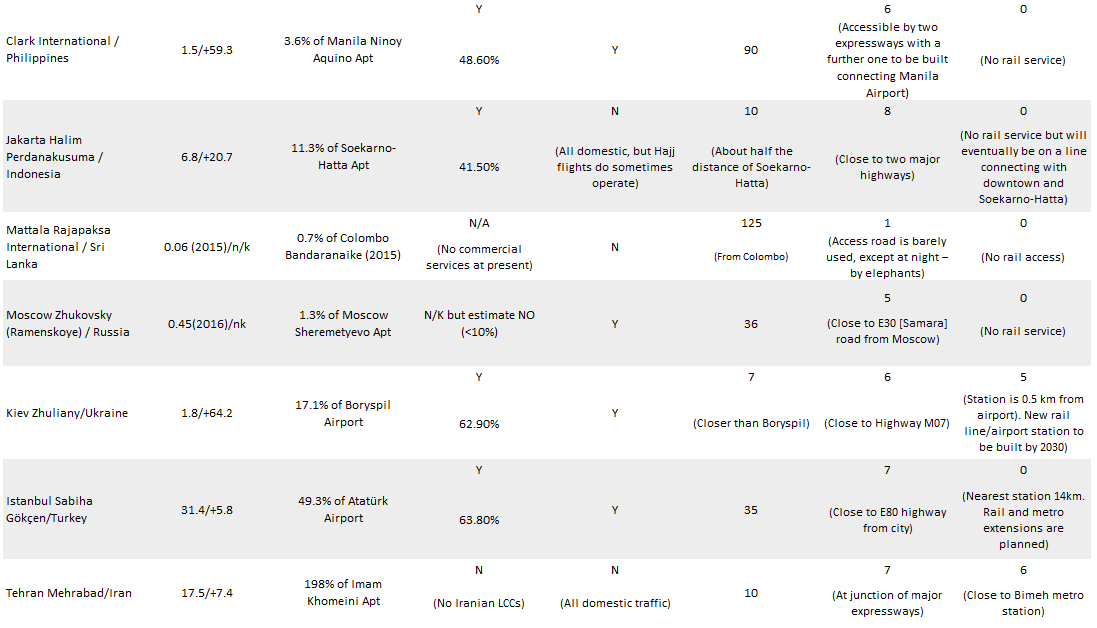As Asia covers a huge area, a smaller number of examples are given. Asia includes Turkey, Ukraine and Russia here, but is not extended to Oceania.
Summary:
- Secondary level airports have arisen (or have been superseded by others) across Asia.
- In comparison with Europe and North America, they are slightly less likely to be 'low-cost' airports and more likely to have long haul services.
- Several of them are large, with as much as 50% of the traffic of the primary airport.
- The best example of such an airport, one that 'came back from the dead', is Bangkok's Don Mueang Airport.
The same principles apply as previously: which are the 'secondary' level city airports at major cities in Asia; how their passenger traffic figures compare with the primary airport; which of them are 'low-cost' airports (35% or more of seat capacity on LCCs); how far they are from the centre of the major city they claim to serve; and how accessible they are by road and rail.
The incidence of secondary city airports is not as great in Asia, where 'budget terminals' at existing airports such as Singapore Changi and Kuala Lumpur were popular, and still are at Kuala Lumpur. Popular with the airport operator that is - not necessarily with the airlines.
There are a handful of examples that immediately come to mind, such as Bangkok's Don Mueang Airport. Once it was the main airport for that city, then was cast aside in favour of the new Suvarnabhumi Airport in 2006, and was then reopened when it was clear that the new one could not manage. Now, once again, it is an integral part of the set-up, just as the U-Tapao Airport well to the south will also be, in time.
A the same time, Singapore looks as if it will get a secondary level airport as Seletar Airport acquires a commercial passenger terminal by the end of 2018, at which stage Firefly, the only turboprop operator at Changi Airport, will move its operations there. Other turboprop operators will be directed there.


Source: CAPA Airport Profiles/Author researchIt is more difficult to assess secondary airports in Asia than in, say, Europe. They have arisen there for more diverse reasons than elsewhere. Some are historical ones that slipped into disuse and were then revived (the best example being Bangkok's Don Mueang).
At the other end of the scale is Singapore's Seletar Airport, which is just restarting its commercial journey.
Some of these 'secondary' airports, apart from Don Mueang, are in fact quite large - notably Osaka Itami, Seoul Gimpo, Shanghai Hongqiao and Istanbul Sabiha Gökçen, averaging over 50% of the passenger traffic of the primary airport.
In fact, Tehran's Mehrabad Airport, once the principal one for the city but now only a domestic one, is much bigger than the international Imam Khomeini Airport, on account of Iran's recent economic isolation brought about by sanctions.
Some of them are surprisingly small, such as Beijing Nanyuan, Clark International, and Ibaraki - the relatively new facility to the northwest of Tokyo, which should have been a 'low-cost' venture for the entire metropolitan region but has so far not made its mark in that segment. This, despite LCCs now counting for 17% domestic and 25% international seats in Japan.
Less than half of the fifteen examples count as 'low-cost' airports by the measure employed, which is a lower proportion than in the European and North American reports. Eight of them have long haul flights, which is the same as in the North American report but considerably more than in Europe, where low cost long haul is still relatively in its infancy.
Airports in North Asia score well on rail accessibility, but not so much in Southeast or Western Asia.
As always, there is an 'odd man out': here, the Mattala Rajapaksa International Airport in Sri Lanka. Planned as the country's second international airport, it is far from Colombo, whose airport was badly congested and drove the need for it, it lost all the domestic and international flights it started with in 2013, despite being close to important tourist attractions. The access road is now used for farming purposes.